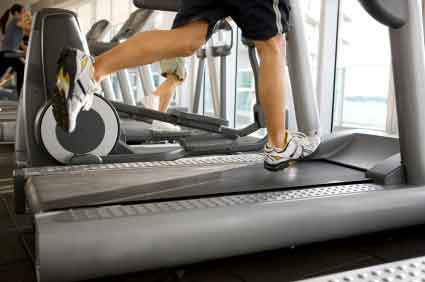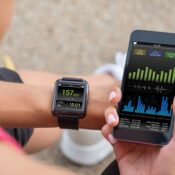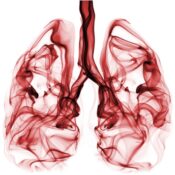No doubt about it: Training indoors simply doesn’t provide the same physical (and mental) benefits as running on outdoor trails and paths. But when there’s no avoiding lousy weather or unsafe conditions, exercising on the dreaded treadmill or indoor track can be just as effective, explains Andy Fry, assistant director for fitness and wellness at Indiana University’s School of Health, Physical Education and Recreation (HPER). “I suffer from allergies,” he says, “and when the conditions get real bad, I stay indoors.”
Here, the fitness expert offers these indoor workout tips for runners:
- Incline the treadmill between 0.5 percent and 1 percent to help simulate outdoor air movement.
- Adjust treadmill elevation frequently to prompt changes in your gait as occurs with hills.
- Vary the treadmill running speed to stay motivated and focused.
- Stay hydrated to keep you cool, especially if there isn’t a fan nearby.
- Try aqua jogging for 20 minutes or more.
- Run on an indoor track. Alternate your running direction each day to avoid developing strength imbalances in the hips and legs. Fitness facilities usually change the “travel pattern” on tracks each day, so running back-to-back days is best.
- Use stairs or elliptical machines to provide cardiovascular benefits that complement traditional running.
Avoiding Allergens
For runners who are willing to brave pollen, ragweed, mold, and other outdoor allergens, Fry suggests the following:
- Check the pollen count to avoid areas that are likely to produce allergy symptoms.
- Wash exercise clothes daily to remove pollen. Also take a shower right after exercising. Most severe allergic reactions occur within an hour of pollen exposure.
- Exercise between 10 a.m. and 2 p.m. Pollen counts are often lower during midday compared to early morning and evening hours.
- Run after it rains, when the air is likely to be clear of pollen.
- Breathe easy. Nasal passages are the first line of defense against pollen. When running, remember to breathe in through your nose and out through your mouth.
Become a Saturday Evening Post member and enjoy unlimited access. Subscribe now



